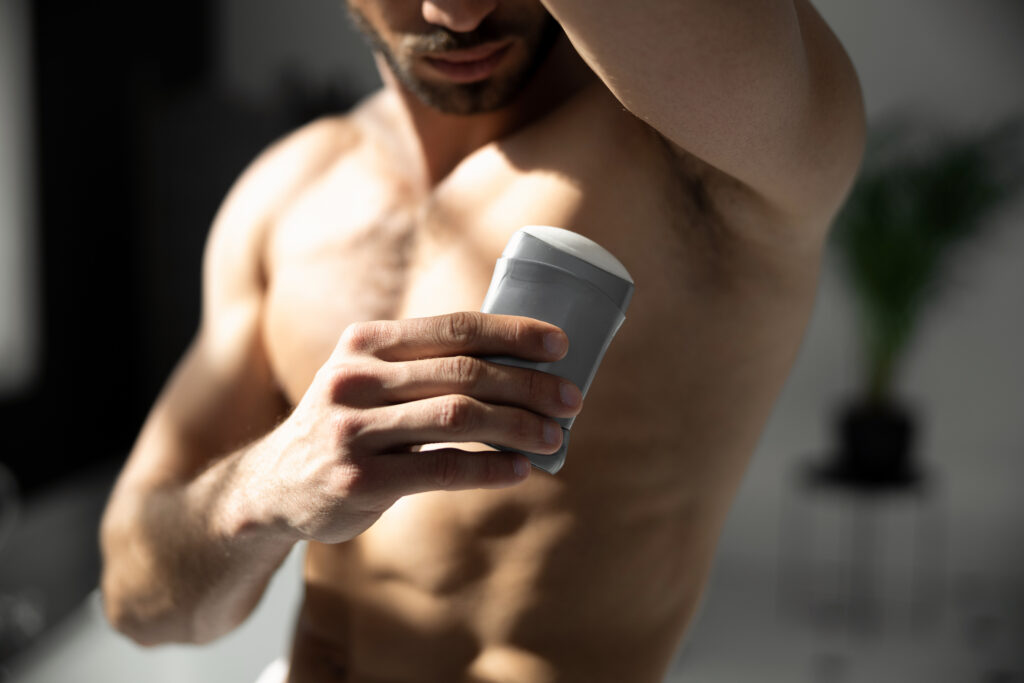Formulating Hair Care Like Skin Care
Formulators are being asked to deliver visible, measurable improvements across the scalp, follicle, and fiber—often in fewer steps and with gentler profiles. “Skinification of hair care” is not a tagline; it’s a practical shift in how we diagnose problems and place actives where they matter. Scalp behaves like the rest of the skin: it has a barrier, a microbiome, and inflammatory pathways that respond to irritation and oxidative stress. When those systems are pushed off balance, consumers feel itch, see flakes, and abandon products. Treating scalp like skin—supporting barrier function, managing microecology, and controlling inflammation—sets the baseline for performance claims downstream.
At the same time, the follicle is a distinct, targetable structure. It is both a penetration route and a therapeutic target for hair concerns tied to shedding, density, and growth dynamics. Delivery that reaches the infundibulum or dermal papilla unlocks effects that topical “surface only” systems cannot deliver reliably. Add to this the daily reality of heated styling, UV exposure, and urban pollution degrading hair proteins, and it’s clear that true root-to-tip solutions must combine skin-science discipline with fiber protection that survives rinse-off and real-life use.
The Real-World Test: Three Sites, Three Failure Modes
First, the scalp. Seborrheic dermatitis and dandruff occupy a spectrum linked to barrier dysfunction and the activity of Malassezia species. When the stratum corneum is disrupted, the scalp is more reactive, consumers report discomfort, and compliance drops. Interventions that are too aggressive or that act too deep can exacerbate irritation. Effective products respect the corneum, manage microecology at the surface, and support barrier normalization over time. This is why “skin-like” strategies—controlled exfoliation at the surface and anti-inflammatory support in the viable epidermis—are gaining traction in modern rinse-off and leave-on formats.
Second, the follicle. Conventional topicals often underperform because they do not meaningfully reach the follicular target. The literature is clear: the follicle is not only a conduit but also a destination, and particle- or vesicle-based systems can increase local deposition inside follicles while modulating release and tolerability. For formulators, this means peptide and botanical complexes designed for anchorage or density support should be delivered in carriers engineered for follicular access rather than relying solely on free diffusion from a surface film.
Third, the fiber. Oxidative processes induced by UV and urban pollution carbonylate hair proteins—an early, quantifiable marker of structural damage that precedes visible dullness, roughness, and breakage. Antioxidant strategies can limit this cascade, but only if those antioxidants persist on or within the fiber where exposure occurs. Daily styling and shampoo cycles make this persistence requirement non-negotiable. Any solution that promises protection must demonstrate either strong substantivity or controlled, on-fiber release to maintain effect between washes.
Target the Site, Win the Claim: DDS, CDS, FDS, and HDS in Practice
INdermal’s delivery platforms are designed around skin-science principles and map directly to these failure modes. For scalp tolerance and comfort, DDS (Deep Delivery System) places soothing and barrier-supportive actives (e.g., enoxolone, niacinamide) into the viable epidermis rather than leaving them stranded at the surface. This allows formulators to build shampoos and leave-ons that calm reactivity without heavy occlusives, and to maintain user comfort even when pairing with exfoliants or antifungal agents. The strategy aligns with the clinical understanding that dandruff pathophysiology involves both barrier and inflammatory dimensions.
For surface control where irritation risk is highest, CDS (Corneum Delivery System) confines action to the stratum corneum. Encapsulated glycolic acid can smooth scaling and improve cuticle lay without the sting that comes from deeper penetration, while a surface-targeted antifungal such as piroctone can address Malassezia at the interface where it matters. By focusing effect where flakes originate, CDS helps preserve tolerance even in frequent-use regimens. This is a direct, formulation-level response to the “treat the scalp like skin” insight: keep acids and antimicrobials at the skin’s outermost layer when that is sufficient to achieve the goal.
For anchorage, density, and resilience, FDS/EXO FDS (Follicular Delivery Systems) deliver peptides and botanical complexes into the follicular unit. The peer-reviewed evidence base shows why this matters: targeted systems leveraging follicular physiology improve local deposition and can enhance efficacy while moderating irritation. For formulators building night serums or targeted scalp leave-ons, this means you can design for the destination rather than hoping for incidental penetration—a practical path to sustained, localized exposure where keratinocyte proliferation and dermal papilla signaling are relevant.
Finally, HDS (Hair Delivery System) addresses the fiber itself. Antioxidant stacks (for example, ferulic + EAA + tocopherol) and fiber-conditioning actives (such as panthenol or hydrolyzed proteins) are carried in a cationic, rinse-resistant system to remain on or within the hair shaft. This is the missing link between measured oxidative stress in laboratory models and consumer-visible gloss, smoothness, and combability. By improving substantivity and controlling release, HDS helps translate “anti-pollution” and “heat defense” narratives into durability that survives real-world shampoo and styling cycles. The approach is consistent with literature using protein carbonylation as a reliable read-out of pollution-induced damage and its prevention by antioxidants.
Designing for Data: Targeted Delivery, Measurable Benefits
➡ Scalp comfort and balance (DDS: deeper, controlled)
When a scalp system needs fast comfort without heavy occlusion, DDS places soothing and barrier-supportive actives into the viable epidermis rather than leaving them at the surface. This deeper placement is designed to support cytokine down-modulation and short-to-mid-term hydration while maintaining a light sensorial profile—useful in both rinse-off and leave-on formats where irritation control drives compliance.
Vegan DDS Enoxolone is an efficient choice for reactivity and discomfort; Vegan DDS Niacinamide supports barrier normalization and sebum balance over time. In combination, you can run acids or antifungals elsewhere (see CDS below) without compromising tolerance, because the soothing work is happening where the signals originate.
➡ Surface control without sting (CDS: corneum-only, pH-precise)
Flake reduction and shine often fail when actives roam deeper than needed. CDS confines action to the stratum corneum, enabling low-pH exfoliation performance with improved tolerance.
Vegan CDS Glycolic delivers “acid efficacy without the ouch”: by concentrating activity at the corneum, it smooths scaling and supports cuticle lay while minimizing sensations that can derail frequent-use routines. Vegan CDS Piroctone targets scalp microecology at the same surface layer—practical for dandruff-prone users who need antifungal action without deeper irritation. Together, these two build a surface-first regimen that addresses visible flakes and dullness while keeping the user comfortable.
➡ Anchorage, density, and follicle resilience (FDS / EXO FDS: follicular targeting)
Concerns about shedding and density demand follicle access, not just scalp care. FDS and EXO FDS are engineered to deliver payloads into the follicular unit, where proliferation and oxidative stress balance influence anchorage.
EXO FDS FolliXield pairs a peptide with a botanical complex and delivers them to the follicle to help counter oxidative markers and support regenerative signaling—an approach aligned with night serums and targeted leave-ons. Vegan FDS Pyrrolidin is formulated for the dermal papilla micro-environment; by improving local availability at that site, it supports the conditions associated with the anagen phase. Vegan FDS Curcumin supplies targeted antioxidant protection at the root, buffering oxidative stress that can undermine anchorage before it shows up as visible thinning. For many briefs, layering FDS/EXO FDS with DDS soothers produces a tolerable, high-signal serum that addresses both stress and comfort in one step.
➡ Fiber durability and feel (HDS: cationic, rinse-resistant)
Daily styling, UV, and pollution oxidize structural proteins and roughen the cuticle long before consumers notice visible dullness. HDS uses cationic lipids to adhere to hair, resist rinsing, and release payloads where damage accumulates. This turns leave-ins, masks, and primers into systems that keep working between washes, so “protection” and “repair” claims have a realistic chance of surviving real-world use.
Within this framework, Vegan HDS Keradefence supplies an antioxidant stack that limits early oxidative events linked to color fade, frizz, and loss of feel; Vegan HDS Panthenol adds on-fiber moisture retention and smoother grooming for immediate sensorial payoff; and Vegan HDS Kera P contributes repair-oriented protein care that reinforces strength and elasticity by interacting with damaged sites along the cuticle and near the cortex. Together they form a layered defense: Keradefence mitigates incoming oxidative load, Panthenol restores slip and gloss without heaviness, and Kera-P strengthens the mechanical profile—yielding durable, consumer-visible benefits that persist after the next shampoo and blow-dry.
Competitive Advantage Through Biology-Aligned Design
Moving from “ingredients that generally help hair” to site-specific delivery changes how you brief, prototype, and substantiate. It enables minimalist INCI strategies because actives are placed where they are most efficient. It enables clearer study design because endpoints can be selected for the target: barrier and comfort metrics for scalp skin, follicular deposition or proliferation markers for anchorage, and protein carbonylation or combing work for fiber defense. It also builds a portfolio that responds to modern consumer patterns—frequent washing, daily heat styling, and highly sensitized scalps—without relying on heavy occlusives or aggressive solvents.
For suppliers and brands, there is a competitive advantage in aligning claim language with peer-reviewed biology. When your scalp-care system references barrier function and microecology, you’re speaking the language of dermatology. When your anchorage serum cites follicular targeting, you’re connecting the delivery to the destination. When your leave-in uses an antioxidant stack and measures protein carbonylation, you’re linking a consumer-friendly promise (“pollution defense”) to a quantifiable molecular endpoint. This is how skinification becomes more than a theme—it becomes a reproducible methodology that advances both performance and compliance.
From Insight to Implementation
Precision isn’t a luxury in modern hair care; it’s the difference between claims that fade at rinse-off and benefits that hold up in everyday use. Treating the scalp like skin, targeting the follicle when anchorage and density matter, and protecting the fiber against oxidative stress are not abstract ideals—they’re concrete formulation choices. Site-specific delivery gives you control over where actives go, how long they act, and how well your claims translate from bench to bathroom.
If you want to go deeper—and see how these principles translate into study design, processing windows, and market-ready claims—join INdermal’s upcoming webinar, “Targeting the Root of Hair Health: The Skinification Effect.” Dermatologist Dr. Pedro Rodríguez (Clínica Dermatológica Internacional) will unpack scalp health insights alongside practical formulation guidance on encapsulated actives and delivery systems that drive root-to-tip results.
Register for the webinar:
Date & Time: 19 November 2025, 18:00 CET (9:00am PST | 12:00pm EST).
Reserve your spot to get actionable takeaways you can apply directly to your next scalp serum, anti-dandruff system, or leave-in defense.
If you’re building a scalp-comfort shampoo, an anchorage night serum, or an urban heat-shield leave-in, we can help you select the right INdermal system, set processing parameters, and define meaningful endpoints. Submit a request on the Deveraux Specialties website or contact your dedicated sales manager to start an evidence-based brief that maps problem → site → delivery → measurable outcome.
Vegan DDS Enoxolone
EXO FDS FolliXield
Vegan FDS Pyrrolidin
Vegan HDS KeraDefence
Vegan HDS Kera P
Resources:
- Borda, L. J., & Wikramanayake, T. C. (2015). Seborrheic dermatitis and dandruff: A comprehensive review. Journal of Clinical and Investigative Dermatology, 3(2), 1–12. https://pmc.ncbi.nlm.nih.gov/articles/PMC4852869/
- Gu, Y., Bian, Y., Wang, H., & Li, L. (2022). Hair follicle-targeting drug delivery strategies for the treatment of hair disorders. Drug Delivery and Translational Research, 12(7), 1623–1637. https://pmc.ncbi.nlm.nih.gov/articles/PMC9237597/
- Cavagnino, A., Starck, A., Bobier, A., & Baraibar, M. A. (2022). Protein carbonylation as a reliable read-out of urban pollution damage/protection of hair fibers. Cosmetics, 9(5), 98. https://www.mdpi.com/2079-9284/9/5/98
Citation Note
We used peer-reviewed, open-access sources to ensure that claims about scalp pathophysiology, follicular targeting, and hair-fiber oxidative damage are grounded in reproducible science and accessible for verification by formulators and regulatory stakeholders. Reviews were prioritized where they synthesize multiple studies (Borda & Wikramanayake; Gu et al.), and an application-oriented research article (Cavagnino et al.) was selected to connect molecular damage (protein carbonylation) with practical antioxidant protection endpoints in hair-care testing.









